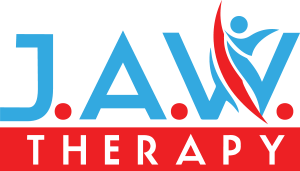Our Services
J.A.W. TherapyOur physical and occupational therapists come to your home to perform individualized assessments and then develop a treatment plan to help meet your goals. No more traveling to and from a clinic or office. All visits and treatments are done in the comfort of your home or building gym (if available and preferred). All equipment and supplies are provided by the therapist. Our therapists use a variety of treatments including:
Modalities
To help increase blood flow, stimulate muscle activity, promote tissue healing, and decrease inflammation and pain. Some of these modalities include ultrasound, electrical stimulation, TENS therapy, hot and cold compresses. .
Therapeutic exercises
Such as stretching, range of motion exercises, resistive strengthening exercises, endurance training, and balance exercises to help restore muscle balance, decrease pain, and increase strength and functional mobility.
Manual therapy
Techniques are hands-on techniques such as muscle and soft tissue mobilization, kneading and manipulation as well as joint mobilization and manipulation to treat musculoskeletal pain and disability. These techniques are applied by a licensed physical or occupational therapist to help decrease muscle spasm, muscle tension, joint dysfunction and increase tissue glide and joint mobility. .
Therapeutic activities
which use various parameters such as balance, strength, and range of motion for a functional activity such as transferring, walking, reaching, lifting, throwing, and catching.
Neuromuscular re-education
Techniques to train the brain, nerves and muscles to help communication between them and improve strength, balance, and function..
Kinesiotaping
To support and relieve pain in muscles, joints and/or ligaments. It is used to change muscle tone, move lymphatic fluids, correct movement patterns, improve posture, reduces swelling, increases mobility and enhance recovery. .
We Offer:
General health screenings
A clinician will take your vital signs and ask a series of questions pertaining to your lifestyle to determine your general health standing and if there is need to follow up with an specialist.
Gait analysis
A clinician will assess the way you walk through visual assessment as well as measurements of body movements, body mechanics, and the activity of the muscles to help diagnose gait abnormalities.
Orthopedic physical therapy
Occupational therapy
Post-stroke rehabilitation and recovery
Cardiovascular rehabilitation
Vestibular therapy
Steps to a Successful Recovery
Step 1
Identify an INJURY or CONDTION
Step 2
Perform a PHYSICAL EXAMINATION to determine a DIAGNOSIS and identity limitations
Step 3
Discuss the PROGNOSIS: the predicted optimal level of improvement in function and the amount of time needed to reach that function.
Step 3
Set achievable, measurable, realistic, relevant GOALS and establish a timeframe for meeting those goals.
Step 5
Establish a PLAN OF CARE and provide patient EDUCATION about nature of present condition and the PLAN OF CARE
Step 6
Follow the plan of care by providing a therapeutic INTERVENTION
Step 7
Perform a RE-EVALUATION after a set timeframe to track PROGRESS towards goals. Modify the plan of care accordingly.
Step 8
DISCHARGE patient when the goals have been met or patient has reached the maximum benefit from the treatment interventions
